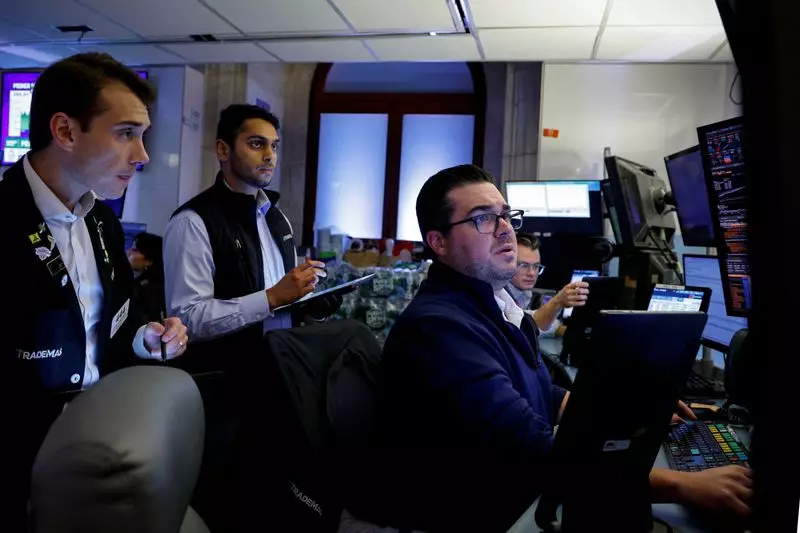The current landscape of U.S. stock futures is marked by a cocktail of geopolitical unrest and domestic challenges that are keeping investors wary. With the backdrop of escalating tensions in the Middle East and ongoing labor disputes within the country, the stage is set for a turbulent market environment. The implications of these factors extend beyond mere fluctuations in stock prices; they reflect broader economic health and investor sentiment.
Recent military actions have cast a shadow over the markets as Iran’s missile strikes against Israel add fuel to an already tenuous geopolitical situation. This escalation has led to both Wall Street’s major indices—the S&P 500 and Nasdaq—experiencing declines, marking lows not seen in two weeks. Investors reacted to these developments by liquidating riskier assets, a common defensive maneuver during times of international uncertainty. The gravity of the situation cannot be overstated; both Israel and the U.S. have indicated their intention to retaliate, further complicating the outlook for stability in the region.
The immediate effect on commodities has been pronounced as well, with oil stocks experiencing significant premarket gains reflective of surging crude prices. The possibility of disrupted supply from a region that is a linchpin for oil production is driving this rally. Companies like Occidental Petroleum and SLB have seen stock price increases of over 2%. This shift indicates that while geopolitical tensions may chill broader market sentiment, sectors like energy can pivot and potentially thrive in response to volatility.
On the home front, the ripple effects of a dockworkers’ strike on the East and Gulf coasts present additional challenges. Experts estimate that this walkout could drain approximately $5 billion daily from the U.S. economy, illustrating how interconnected domestic labor conditions are with broader economic performance. Major retailers such as Costco and Walmart, although largely prepared for such disruptions, are not immune to the potential long-term consequences on supply chains and consumer behavior.
Moreover, the strike has exacerbated growing concerns about inflation. With oil prices spiking and labor shortages affecting supply chains, inflationary pressures could rise, undermining recent efforts by the Federal Reserve to stabilize the economy. The Fed recently embarked on a new monetary policy direction characterized by an atypical rate cut aimed at fostering job growth. As investors assess the potential fallout from these labor disputes alongside geopolitical instability, the stakes are higher.
In the quest to gauge the overall health of the economy, investors are keeping a close eye on pertinent economic data, especially indicators from the labor market. The release of the ADP National Employment survey is eagerly anticipated, as it offers insights that connect labor conditions to monetary policy. With the Fed’s dual mandate focusing on price stability and low unemployment, employment statistics are at the forefront of economic forecasting.
The upcoming non-farm payrolls report is a pivotal piece of economic data that could impact market sentiment and Fed policy. With current odds suggesting a probability of over 63% for a quarter-percentage-point rate reduction in November, analysts will scrutinize employment indicators closely to determine whether a more dovish monetary approach is warranted.
The prevailing mood among investors is heavy with uncertainty, as reflected by the CBOE Volatility Index hovering near three-week highs. Stocks like Nike have faltered significantly in light of corporate changes, adding layers of complexity to market reactions. The interplay of corporate performance, geopolitical tensions, and labor disputes creates a multifaceted challenge for investors aiming to navigate these turbulent waters.
As the economic landscape unfolds with multiple moving parts, maintaining a keen awareness of both domestic and international developments will be crucial for stakeholders. The intertwined nature of these elements not only shapes individual companies but could also dramatically influence the trajectory of the U.S. economy as a whole. Investors are advised to approach the coming days with both caution and a keen sense of awareness, bracing for the potential fallout from the precarious balance of geopolitical volatility and domestic strife.

